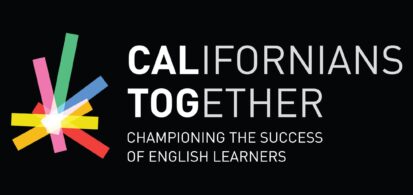While most districts are struggling to address the needs of English Learners through distance learning, Anaheim Elementary School District (AESD) has kept their focus on bilingualism, biliteracy and English Learners while planning for distance learning during school closures.
AESD is one of the largest elementary school districts in California, serving approximately 16,000 preschool through 6th grade students across 23 schools in a dynamic, standards-based learning community. The student population is approximately 52% English learners, 18% Reclassified-Fluent English Proficient (R-FEP), 2% Initially-Fluent English Proficient (I-FEP), and 26% English only students. Of their English learners, 94% have a home language of Spanish. Additionally, 86% of the students are socioeconomically disadvantaged, 11% GATE, 11% receive special education services, and 9% are homeless.
With the leadership from the superintendent, support from the Board of Education and the community, AESD has either a Spanish or Korean Dual Language Immersion (DLI) Program at all 23 elementary schools, leading to comprehensive DLI programs from TK through 6th grade. They also offer Accelerated Language Academy or Structured English Immersion and Mainstream English Immersion for their English Learners not enrolled in DLI programs.
Ensuring Technology Access for All Students
Prior to COVID-19, AESD was already a 1:1 digital district with one chromebook per family. Upon announcement of school closures, parents received an email or phone call (via parent link) to pick up their chromebook with a charger at their school sites. This happened over the course of 3 days. For the families who didn’t pick one up, the school site individually called each parent. They had already established a partnership/grant with T-Mobile for wireless internet hotspots allowing free access to the internet. To expand access, AESD identified companies such as Comcast and Spectrum who are offering free internet service for three months.
Delivering Content in English, Spanish and Korean
From the very first notification of possible school closure, the district pulled together all the curriculum specialists including their digital learning specialist to create a plan for teachers to use for distance learning. Initially until their spring break, the week of April 13th, teachers did not introduce new materials or concepts. After spring break, teachers have begun to introduce new concepts from their curriculum. A continuity plan per grade level was developed in English, Spanish (will be linked to plans in our box) and Korean (also linked to plans in box) that was structured around the hours in a minimum daily schedule with another hour for daily planning time.
The district also took steps to ensure that units of study and materials from the core curriculum are available in English, Spanish, and Korean. All teachers received professional development and a template for their grade level, allowing them to plug in units of study from their core curriculum (commercially developed) in English and Spanish. To develop the curriculum in Korean and ensure alignment with the same themes, the district has a partnership with professors from CSU Long Beach. Korean interpreters also read stories and taped content lessons for all subject matters. The DLI teachers maintain the same language of delivery consistent with their prior classroom instruction.
In addition to the core curriculum in language arts and math, the district also developed:
- Daily 30-minute ELD lessons delivered using Rosetta Stone Foundations (different from the commercial Rosetta Stone for world language lessons).
- Short lessons on how to address the social emotional needs of students, integrated into the language arts instruction. These lessons, developed by the two district social emotional specialists, came from the understanding that students are worried and often stressed about their family situation and the news about the coronavirus.
- Weekly 30-minute music lessons in the languages of the programs, produced by music teachers.
- Videos of short PE activities for the students to do at home.
Accessing the Content
The district webpage has icon links in all three languages that take students directly to the online platforms needed. The core curriculum is available digitally and in all three languages for teachers to upload and send via google classroom, which is the main portal for students to access the lessons.
While not perfect, it is very significant that distance learning is not English-only instruction and the language, academic, and social emotional needs of English learners are at the core of their developmental work for equity in distance learning.
As Magaly Rodriquez, the district’s Dual Language Immersion Curriculum Specialist said, “These are the highlights of our process, and it is ongoing minute to minute. All departments and everyone in the district incorporate English learners in all of our efforts. It is a mission we take to heart. It is our reality.”
